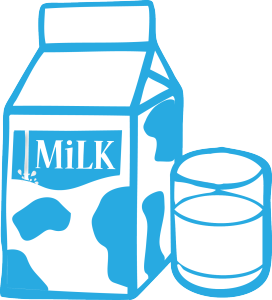Three things you should know about lactose intolerance
Lactose intolerance - what it is
Many people that receive this diagnosis are perplexed, as they have either never heard of lactose or would not have thought that it could affect them. Lactose is also known as milk sugar. It is contained in most milk products. Intolerance means that your body’s ability to make use of lactose is low. If you have a sensitive tummy, which has nothing to do with the strength of your character, by the way, this leads to various abdominal discomforts. One reason for these discomforts is the use of the sugar by bacteria, which results in gases. Morover, general abdominal pain, constipation and diarrhea can result from this.
This is how you overcome your lactose intolerance sympoms
The higher your lactose intake, the more likely you are to experience the respective symptoms. Thus, one way to get over these symptoms is to reduce your consumption of foods containing it. Another way is to take in enzyme capsules. Still, both approaches sometimes only have marginal effects for people suffering from lactose intolerance. New studies suggest that so-called fructans and galactans play an important supporting role when it comes to the prevention of symptoms. These ingredients are also contained in beans and are the reason behind the saying “every bean has its tone”. Moreover, they are also included in milk and various other products. Research indicates that for many people suffering from lactose intolerance symptoms, fructans and galactans adversely influence their well-being more than lactose itself. Therefore, a sensible approach is to check whether you are intolerant towards fructans and galactans as well and then manage your consumption accordingly.
What you can actually do
Lactose intolerance usually lasts for a long time. Thus, you should find a reliable strategy to dealing with it. Consumption management alone isn’t enough. You should also consider health aspects and ways to compensate for the loss of important ingredients contained in products you avoid. Moreover, you should make sure that you avoid unnecessary consumption restrictions. This is possible if you determine your individual sensitivity and adjust your portion sizes accordingly. The only guide that offers you this opportunity and explains everything you need to know in a concise way is "The Nutrition Navigator". It has been developed in cooperation with scientists and patients. For its practicability, reliability and wide product range, it is highly accepted around the globe. After learning about the background and consequences of lactose intolerance, you can find out about the required tests in the guidebook. After conducting these tests, you can find the tolerable serving sizes for 1,111 products. An A-to-Z list makes a fast search easy, and category lists enable you to quickly find alternative products. You will also find out how many lactase capsules you need. Finally, the book also contains the fitting serving sizes for fructans and galactans. Click here to purchase "The Nutrition Navigator" and reliably liberate yourself from your lactose intolerance symptoms.




